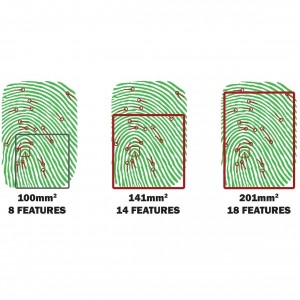Actualizado el 24/06/2025
University of Madrid study proves sensor size key factorEscrito por Redacción TNI el 14/04/2015 a las 17:22:231916
 NEXT Biometrics Group ASA (OAX: NEXT) today announced that a new study by the University Carlos III of Madrid proves that fingerprint sensor accuracy is directly connected to the size of sensors used in smartphones, PCs and other devices.
The study initiated by Norwegian sensor producer NEXT Biometrics was independently conducted by Professor Raul Sanchez-Reillo at the University Carlos III of Madrid, a highly-respected biometrics industry resource. The study involved three market-leading sensors and was conducted under rigorous scientific conditions, where more than 80,000 fingerprints were collected and more than 100 million comparisons made.
Tore Etholm-Idsoe, CEO of NEXT Biometrics, said, “The university study supports what biometric experts around the world have said for years, that size is the key factor in fingerprint sensor accuracy. A reliable fingerprint sensor system cannot compromise on sensor area. Going forward, expanding the use of fingerprint systems into payments, cloud access and corporate access, the importance of sensor system reliability will grow further.”
Etholm-Idsoe added, “Cost is a major factor for manufacturers in choosing fingerprint sensors. At NEXT, we offer a solution by supplying right sized, uncompromised performance sensors at prices acceptable to the mass market. All known competitors need to cut sensor size in half or more to compete on price, thereby severly sacrificing quality.”
The study by Professor Sanchez-Reillo showed that if the acceptable rate for False Acceptance is set at 1 in 10,000, a sensor size of 200 square millimeters will give less than 1 per cent False Rejections with a high-end algorithm. If the active area is halved to 100 square millimeters the average false rejection rates grow dramatically to more than 5%.
In addition, significantly more users will be rejected during enrollment when using a small area sensor as the study shows.
Etholm-Idsoe said, “To compensate for small sizes, some suppliers have recommended multiple finger placements to improve performance (a method patented by Apple). Even when taking this method into account, the performance quality was dramatically reduced. The study also proves that changing the algorithm used in the system does not change the results significantly. Size is still the dominant factor.”
NEXT further noted that the Madrid tests were performed in a controlled indoor environment. When used outside, skewed finger placements and variables like wet and dirty fingers become even more frequent and under such conditions the importance of sensor size further increases.
A complete version of the full report will be available shortly and can be ordered from this link: http://nextbiometrics.com/the_company/contact_us/ |